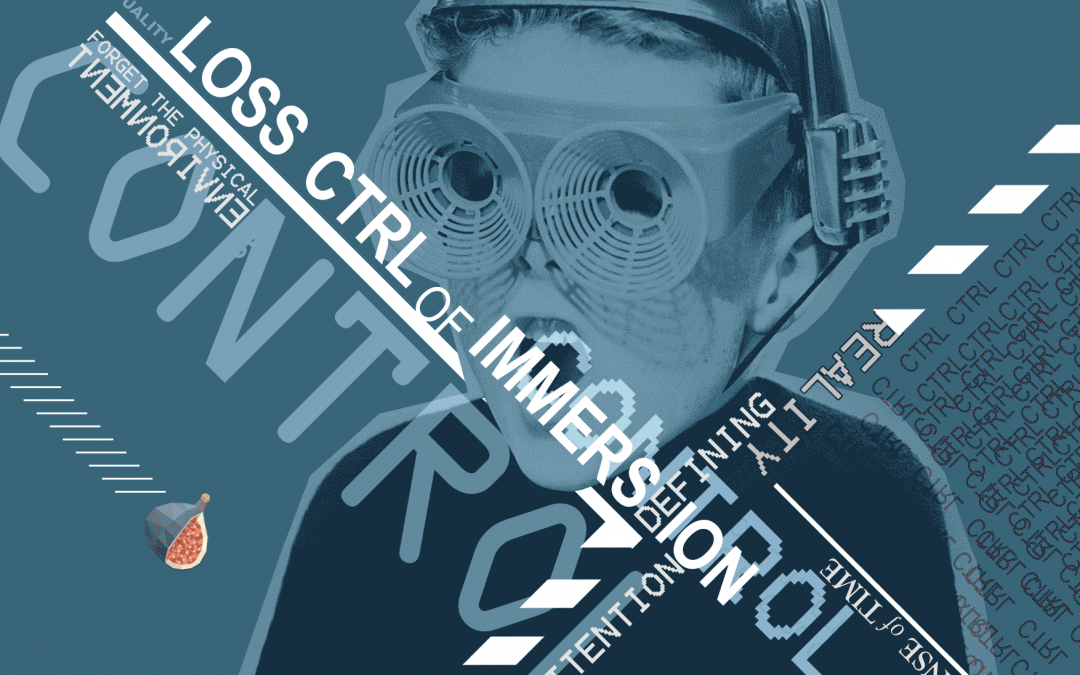2nd article in a series aimed at defining, delimiting and organizing the concepts of attention, immersion, involvement, engagement, flow and presence. This 2nd article deals with the concepts of attention and immersion.
The first article in the series (Understanding and deconstructing players’ experience (1/5): context) provided the context of this research.
Preamble
This series of 5 articles includes part of the research article entitled Defining Engagement and Characterizing Engaged-Behaviors in Digital Gaming that was published in the journal Simulation & Gaming (Bouvier et al., 2014). You will find the reference at the end of the article.
Please note that while these articles have a video game dimension (playful or serious), the suggestions are also applicable to other technological and social activities such as virtual reality.
Attention
Observation
This phenomenon is perhaps the least equivocal of those discussed in this series. It is also the basis of everything, the sine qua non condition of any experience. Before exchanging information and energy, attention must be focused on a thing or situation.
And grabbing people’ attention is not a straightforward matter. Indeed, faced with a growing number of (invasive?) solicitations and temptations, attention has become a rare and therefore highly valued resource (see the article Attention, a precious good in the CNRS journal. But I’m getting away from myself.
Definition
According to Roda et Thomas (2006) attention is “the set of processes that allow and guide the selection of information.” Thus, attention is focused on the place deemed most relevant for acquiring and processing information. In fact, attention has three dimensions: the target, intensity and duration.
It is possible to differentiate between two types of attention:
- attention captured by an event or external stimulus such as a flash of light;
- controlled attention when the attention is voluntarily focused on an area of the environment that is of particular interest.
In the beginning, there was attention
The allocation of attention (and especially its retention) is therefore determined by the interest of the operator and by the form and content of the proposed activity. It is therefore clear that attention is the point of entry before any idea of immersion or later engagement.
Immersion
I’m immersed, you’re immersed…
The term immersion is probably the term most frequently used by gamers, game designers and researchers. Who hasn’t already heard or pronounced the following sentences:
- “the graphics are so realistic that you’re immersed/immerged/projected…”
- “the story is so compelling that you are immediately plunged/immersed …”
- “thanks to the VR helmet you feel like you’re plunged/immersed in the action/situation…”
- “the background music immerses us in…”
- “I was so wrapped up/immersed in the action, I didn’t notice the time go by…”
A particularly ambiguous term
Through the various examples in the sentences above, we can see that the idea of immersion can be associated with a technology or the sensory rendering that results from it, with the content (history, actions to be performed) or with a state or feeling of the user. This ambiguity is reflected in the work of Ermi and Mäyrä (2005) who consider the following 3 components of immersion:
- a sensory immersion referring to the visual or audio properties of the game;
- an immersion based on the challenge in relation to the player’s skills and the challenges offered by the game;
- creative immersion that occurs when players are absorbed in the game’s narrative or identified with a character.
For Jennett et al (2008), immersion is the result of a “good gaming experience“. An experience that results in the loss of all sense of time, forgetting the physical environment and a sense of belonging to the environment of the game.
In short, immersion is a rather catch-all concept that refers to both:
- the characteristics of a game both in terms of content (story, challenges, etc.) and form (graphic design, sound spatialization, visual display, etc.);
- the player’s reactions, his gaming experience, such as being absorbed in the game.
However, given the same characteristics (same game, same device), the reactions and experiences felt by the players are often different, right?
Do you think it is relevant for a concept to refer both to the factors that make up an experience (the game characteristics) and to the effects on the player (the player’s feelings)?
Definition
The debate around the concept of immersion has already taken place in the virtual reality research community (Slater, 1999; Slater, 2009). That is why I prefer to limit the concept of immersion to:
The objective and measurable description of the means and methods implemented to ensure the perception, understanding and ultimately the appropriation of the virtual environment. (Bouvier, 2009)
On a computer screen or with a virtual reality headset? With or without sound, and if so, spatialized? With a tactile device, haptic or not? And so on.
The objective of immersion is therefore solely to describe the virtual environment according to the user’s senses in a sufficiently intelligible way so that the user (the player) perceives possibilities for action (what s/he can or has to do).
To go further
Thus, the immersion can be more or less:
- exclusive: awareness of the real environment can be non-existent as in virtual reality or partial as in augmented reality;
- extensive: depending on the number of senses stimulated;
- surrounding: awareness of the virtual environment is omnidirectional (virtual reality headset for example) or limited (computer screen);
- accurate: compared to normal perception (stereoscopic vision for example) and human perceptual resolution;
- coherent: spatial and temporal coherence between the different sensory modes that describe the environment and coherence between the user’s movements and the rendered environment;
- bidirectional: since immersion is about rendering the virtual environment to the user, the virtual environment must take into account the user’s presence within it;
- transparent: immersive devices should ideally be easily forgotten (it’ s not the same thing to wear a 400 g Oculus or a helmet that weighs several kilos);
- natural: ideally, interactive patterns should allow for a correlation between the proprioception of the virtual self (proprioception of the character played) and the proprioception of the real self (proprioception of the player). Below are some explanations of this last point.
Proprioception makes it possible to always be aware of the relative position of the different parts of one’ s body without the need for visual information. If the character lifts his head when the user moves the mouse (as is currently the case in many games), there is no correlation between the character’s proprioception and the player’s proprioception.
On the other hand, if the character lifts his head when the player lifts his head as well (because it is being tracked as in virtual reality), then there is a correlation between the 2 proprioceptions. This connection affects in particular the player’s appropriation of his environment (because it is explored and handled more instinctively) and of the character (because he is brought to life more spontaneously).
The tracking capabilities of new virtual reality devices, including head tracking, have a direct impact on the immersion quality. Many people think that the most critical aspect of virtual reality is not the quality of visual rendering but the tracking. What about you?
Finally, because it is always interesting to remember where we come from, below the first head-mounted display (1968!!!), The Ultimate Display by Ivan E. Sutherland. The device consists of two monochromatic cathode ray tubes but does not provide stereoscopic vision. The headset is so heavy that it must be suspended from the ceiling. The mechanical arm is used to follow the head’s movements. Because of the presence of the mechanical arm, the nickname of the device is the Sword of Damocles…

Bibliography
Bouvier, P., Lavoué, E., & Sehaba, K. (2014). Defining Engagement and Characterizing Engaged-Behaviors in Digital Gaming. Simulation & Gaming, 45, 4-5, 491-507.
Bouvier, P. La présence en réalité virtuelle, une approche centrée utilisateur, Thèse de doctorat, Université Paris-Est, France, 2009.
Ermi, L., & Mäyrä, F. (2005). Fundamental components of the gameplay experience: Analysing immersion. In Proceedings of the DiGRA Conference: Changing Views: Worlds in Play (p. 14). Vancouver, British Columbia, Canada.
Jennett, C., Cox, A. L., Cairns, P., Dhoparee, S., Epps, A., Tijs, T., & Walton, A. (2008). Measuring and defining the experience of immersion in games. International Journal of Human-Computer Studies, 66, 641-661.
Roda, C., & Thomas, J. (2006). Attention aware systems: Theories, applications and research agenda. Computers in Human Behavior, 22, 557-587.
Slater, M. (1999). Measuring presence: A response to the Witmer and Singer presence questionnaire. Presence: Teleoperators and Virtual Environments, 8, 560-565. Slater, M. (2009). Place illusion and plausibility can lead to realistic behaviour in immersive virtual environments. Philosophical Transactions of the Royal Society B:Biological Sciences, 364, 3549-3557.
Graduated with a PhD in Computer Science in 2009, I have been immersed in virtual reality for more than 15 years. Passionate about the user experience, I like to explore new technologies and new uses to develop with my colleagues in production and marketing, vivid and effective products for more engaging experiences.




